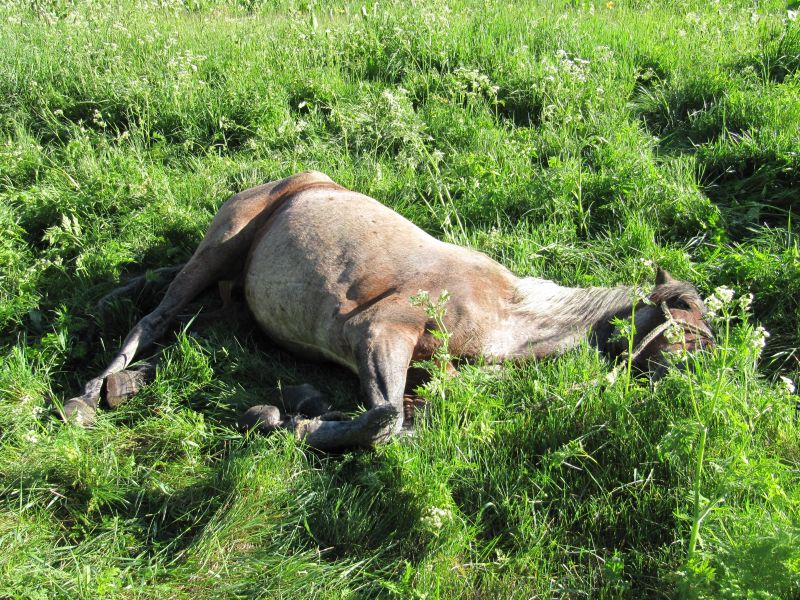This was supposed to be something exceptional. I expected a lot of this Kyrgyzstan crossing on horseback, and it was even more exciting as I hoped. In this country horses are everywhere. The question “what is your name” in Kirgiz means literally: What is your horses name. Here your status in society depends of the horse(s) you own.
92% of Kyrgyzstan is mountains, and my trek begun with a very difficult crossing of the Kungey Ala-Too mountain range. For three days we climbed very steep and exposed slopes up to the 3300 meters high Doro pass. Especially the second day was very difficult for our 5 horses; they worked for 11 hours. It was so hard that BURRU, one of them, collapsed three times. The next morning he was still in very bad condition and I feared he would die. But Nurdin forced him up, and Burru managed to finish the trek, carrying as little weight as possible. Nevertheless, he will not live much longer. In this country horses are working tools, and if they cannot do their duty anymore, they get slaughtered. Kyrgyz people eat their horses, unlike in Turkmenistan, where eating horsemeat is a crime. The last slopes up to the pass even lead us through snowfields, before we started a long descent toward Issi-Kul lake. All these three days we were just walking, trotting or even galloping was totally impossible.
On this side of the mountains there were horses everywhere, mostly in herds of some 20 heads. I counted 11 such herds. They are totally free up here in these high meadows. As for wildlife, it was full of marmots. Nurdin shot one of them for dinner.
After these very exhausting days we changed horses and started for the long traverse of a valley towards the Chinese border. And now the time for speed was come. But first I had to work hard to deserve this. Our new horses were all strong, impetuous stallions, something we would never find in Western Europe. Especially AMANTUR, my horse was very ambitious, and did not suffer to see any other horse in front of him. For a few hours Amantur and I had a power struggle and it took all my strength to get him to obey. Especially after the long galloping parts, it was very hard to stop him, and had to pull him back with all my forces. On one of these fights, I pulled so hard on the reins and pushed so strong into my stirrups that one of these broke. But after a few hours, Amantur gave up, and from that moment on it was just pure pleasure! Trotting and galloping for hours on these never getting tired horses was just thrilling. I guess that the longest single gallop was about 5 km long, and only a road crossing forced us to slow down.
These horses are fantastic. They are a lot smaller then European horses, but this is a quality in mountainous regions. But the most impressive was how sure-footed they are on difficult slopes. They were so trustful, that on very dangerous descends I left my horse choose himself which was the best way to get down.
The reason why there are no geldings but just stallions is that mares and stallions are totally separated. Mares are for milk production only. One mare gives 1 liter of milk five times a day.

BURRU is totally exhausted. The horse collapsed three times

Passing a snowfield at 3300 meters

Trying to find a way after heavy rainfalls

Mosquitos